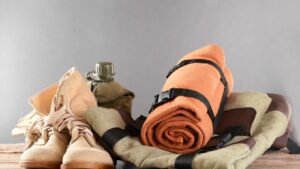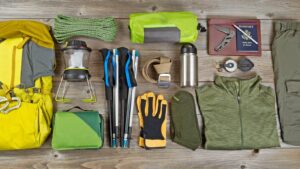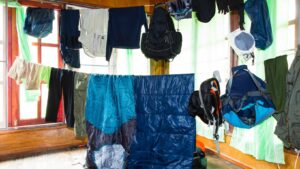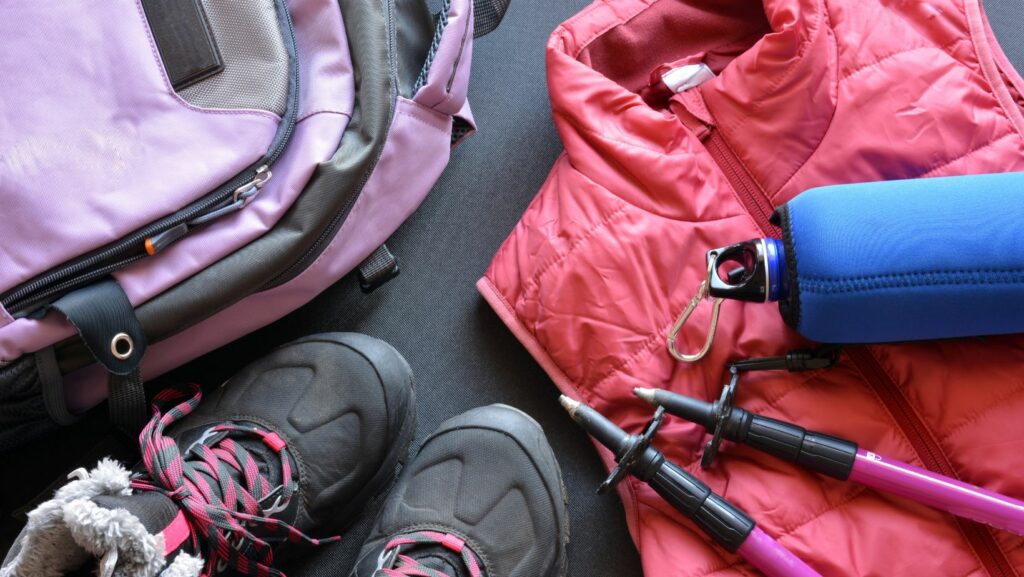Embarking on a hiking adventure? One key ingredient to ensure a successful and enjoyable hike is wearing the right clothes. But what exactly constitutes good hiking attire?
What Are Good Hiking Clothes
 Hiking apparel functions beyond just elements of style. It confines itself to the realm of ensuring safety, protection, and utmost comfort. Outdoor enthusiasts recognize that mismatching apparel can turn a treasured hiking trip into an ordeal.
Hiking apparel functions beyond just elements of style. It confines itself to the realm of ensuring safety, protection, and utmost comfort. Outdoor enthusiasts recognize that mismatching apparel can turn a treasured hiking trip into an ordeal.
The first consideration revolves around dressing in layers. Undertaking such a strategy provides unbeatable flexibility to adjust clothing according to changing weather patterns or personal comfort. For instance, packing a lightweight fleece and a waterproof jacket allows swift adaptation to swiftly-changing mountainous weather.
Notably, the choice of fabric holds significance too. Cotton, though exceedingly comfortable, absorbs moisture and takes longer to dry. Hence, materials like wool or synthetic fibers—with their quick drying and moisture-wicking attributes—are often the first choice for hikers.
Key Clothing Items for Hiking
Recognizing key clothing items for hiking fosters a safer, more comfortable experience outdoors. Primarily, a base layer—the first layer of clothing—significantly impacts comfort as it’s directly in contact with the skin. Ideally, it’s best to opt for lightweight and quick-drying fabrics like merino wool or polyester instead of cotton, due to their superior moisture-wicking properties.
Equally important is the insulated mid-layer, usually a fleece or lightweight down jacket. It functions to retain body heat when the temperature drops.
Lastly, the outer layer acts as a shield against environmental factors such as wind and rain. Waterproof jackets and pants serve this role effectively, provided they’re breathable to prevent overheating.
Base Layers for Comfort
 Catering to the body’s initial contact, base layers play a crucial role in outdoor hiking gear. They provide crucial breathability, especially in warmer temperatures, while aiding in moisture wicking. Crafting them out of fabrics like polyester or merino wool renders efficient sweat management. Polyester dries promptly, halting chills resulting from sweating in cold weather. Merino wool, conversely, offers superior moisture-holding capacity, proving beneficial in colder climates.
Catering to the body’s initial contact, base layers play a crucial role in outdoor hiking gear. They provide crucial breathability, especially in warmer temperatures, while aiding in moisture wicking. Crafting them out of fabrics like polyester or merino wool renders efficient sweat management. Polyester dries promptly, halting chills resulting from sweating in cold weather. Merino wool, conversely, offers superior moisture-holding capacity, proving beneficial in colder climates.
For hiking enthusiasts, two pivotal base layer items include tops and bottoms. Tops, typically long-sleeved, shield the torso from fluctuating temperatures. Bottoms, akin to long underwear, provide warmth and protection to the legs. When selecting base layers, it’s important to consider fit. A snug fit enhances moisture-wicking capability while a loose fit promotes air circulation.
Essential Accessories for Hikers
 Beyond suitable clothing and footwear, hikers require a few additional outfits. Sunglasses provide eye protection against bright sunlight and harmful ultraviolet rays. When considering types, polarized sunglasses with UV protection offer optimal defense. Hikers often wear hats, as these shield not only the head but also the face, neck, and shoulders from harsh sun rays. Broad-brimmed hats are an excellent choice, and their styles include bucket and outback.
Beyond suitable clothing and footwear, hikers require a few additional outfits. Sunglasses provide eye protection against bright sunlight and harmful ultraviolet rays. When considering types, polarized sunglasses with UV protection offer optimal defense. Hikers often wear hats, as these shield not only the head but also the face, neck, and shoulders from harsh sun rays. Broad-brimmed hats are an excellent choice, and their styles include bucket and outback.
Additionally, gloves protect hands from cold weather, scratches, and insect bites. Lightweight yet insulating materials like fleece are preferable. One commonly overlooked yet essential accessory is socks. They aren’t just about warmth, it’s about necessity. They are key in wicking away sweat from the skin to prevent blisters. Look for ones made from wool or synthetic fiber blends. Last but not least, scarves or buffs provide both heat preservation and sun protection functionalities. Multifunctional buffs are especially beneficial, as they can be used in different ways: as a headband, bandana, or neck gaiter.
Tips for Choosing Hiking Clothes
Choosing the right hiking clothes isn’t just about looking good on the trails. It’s a matter of practicality and safety. Layering with the right materials like wool or synthetic fibers can make all the difference in comfort and performance. Base layers are key for moisture management and a good fit can enhance your hiking experience.
But don’t forget the accessories. They’re not just add-ons, they’re essentials in a hiker’s wardrobe. Sunglasses, hats, gloves, socks, and scarves or buffs all play their part in protecting you from the elements. So next time you’re preparing for a hike, remember these tips. They’ll ensure you’re not just well-dressed, but well-prepared for any outdoor adventure.

